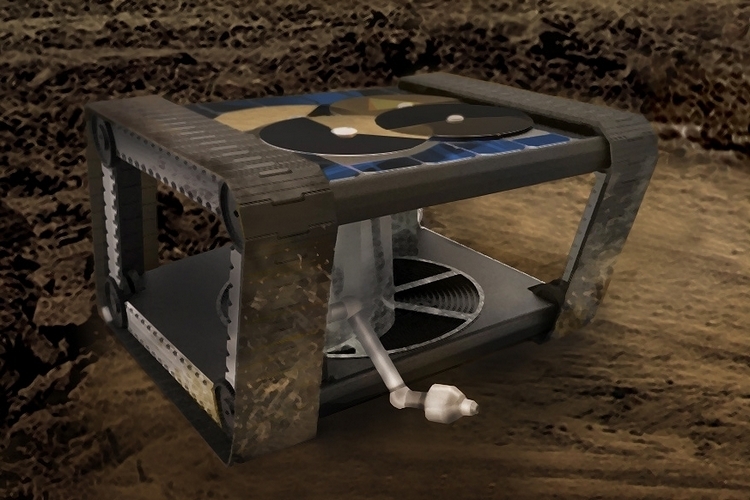
Back in the 80s, the Soviet Union sent a lander to capture data about the planet Venus. That rover lasted all of several minutes, quickly wilting under the planet’s intense heat and toxic atmosphere (not before sending our first images of the planet, of course). No one has sent a rover to the planet ever again. NASA is hoping to change that with a new rover named AREE, short for Automation Rover for Extreme Environments.
Designed to last in Venus for days, if not weeks or months, the rover ditches the sophisticated electronics usually integrated into modern robots, opting to go with parts that are more likely to survive the harsher conditions of the second planet from the sun. That means, relying primarily on mechanical components and minimizing sensitive electronics, ensuring the darn thing won’t end up fried in a matter of minutes like the Russian lander from 30 years ago.

The NASA AREE is a boxy tank-like robot that rolls around on treads, allowing it to pass through the craters, trenches, and whatever other rough terrains the planet sends its way. Instead of powering from a battery, it uses a wind turbine that generates power from the planet’s wind gusts, which it stores inside mechanical springs before distribution to the rover’s multiple moving parts. In simplified terms, the rover functions more like a complicated clock mechanism, rather than the modern robots that rely primarily on electronic systems.
Since rovers are meant to get as much data as possible about the planet it’s been sent to, they’re usually fitted with a gaggle of sensors and data transmitters. Since those things will likely be fried under Venus’ extreme temperatures, they’re going with mostly mechanical alternatives instead. We don’t know exactly what things they’re actually going to load into the machine, but we’re guessing it includes reinforced versions of high-temperature furnace imaging cameras and other industrial systems.
In a similar manner, the NASA AREE won’t be using a two-way radio to transmit data. Instead, it’s going to use an optical reflector that will transmit data in the form of flashing radar light similar to Morse code. Those flashes will be sent to orbiting satellites at a projected rate of around 1,000 bits per day, so this won’t be sending a whole lot of information, especially when compared with the Mars Curiosity 1’s daily transmission of one million bits. The idea is to be able to facilitate a broader and more sustained gathering of information, despite the communication having much less details.
The team behind the rover will spend the next three years building a rough prototype of the robot, which they will use to further test its viability. No, they’re not planning on sending an actual rover to Venus any time soon, but they are hoping that the project will allow them to discover all the necessary technologies that will make it possible to build a rover that can last at least a year in the harsh planet.
You can learn more from the NASA website.
